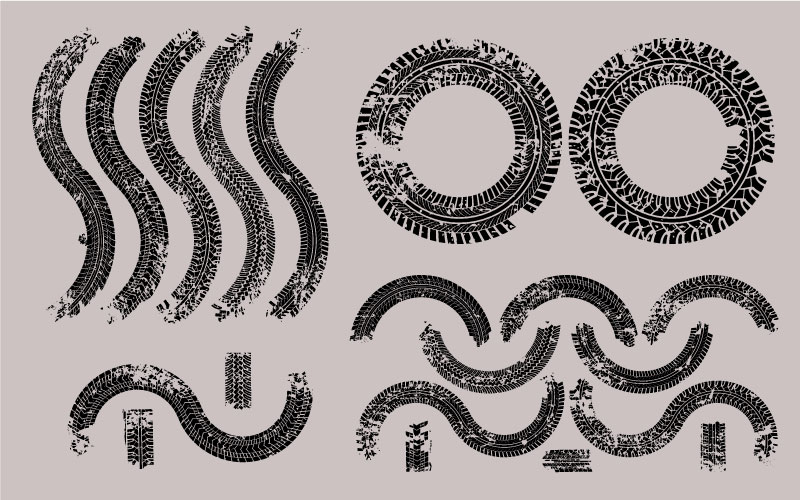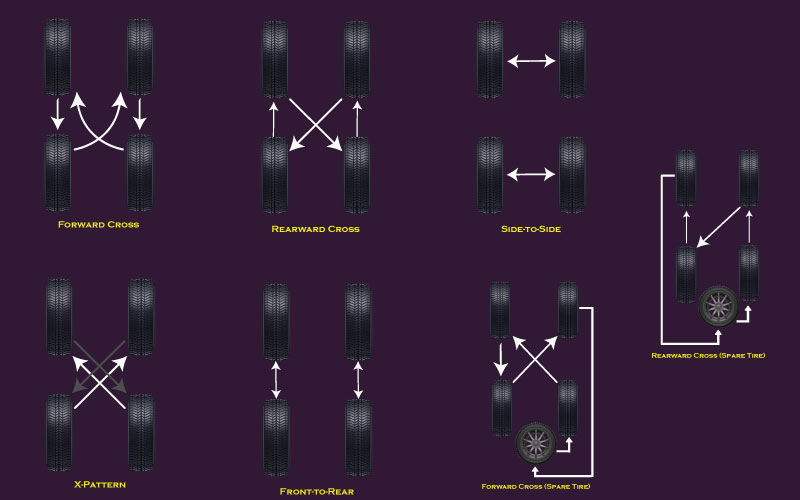Drifting is a driving technique where the driver intentionally oversteers the car to make it slide sideways through a corner while maintaining control and speed. It is a popular motorsport worldwide, and its popularity is growing rapidly. Drifting is not only exciting to watch, but it is also a fun and challenging way to improve driving skills. of motorsports, due to its excitement and challenging nature.
To initiate a drift, there are various techniques that can be used, including the clutch kick, power over, and feint. Maintaining a drift requires precise control of the throttle, steering, and brakes. Combining different techniques can create complex and impressive drifts, but mastering each technique takes practice and skill. In this article, we will discuss various aspects of drifting, including different techniques, car set-up, tires, maintenance, and how to drift an automatic car. We will also provide tips for mastering each technique and choosing the right equipment for optimal drifting performance.
DRIFTING TECHNIQUES

There are various techniques for initiating and maintaining a drift, and mastering each one is essential for executing complex drifts. The most common techniques for initiating a drift include the clutch-kick, feint, handbrake, and power-over techniques.
1. The clutch-kick technique involves quickly disengaging and re-engaging the clutch while maintaining the throttle to shift the weight of the car and break traction.
2. The feint technique involves shifting the weight of the car from one side to the other to initiate the drift.
3. The handbrake technique involves pulling the handbrake while steering to initiate the drift.
4. Lastly, the power-over technique involves using the throttle to break traction.
To master each technique, it is essential to practice and understand the mechanics of the car.
Mastering the art of complex car drifting involves acquiring proficiency in each technique, which is key to initiating and maintaining a drift.
1. For the clutch-kick technique, one should practice disengaging and re-engaging the clutch while maintaining the throttle. This will enable the car to shift its weight quickly, resulting in a break in traction. It’s crucial to time the clutch kick accurately and smoothly to execute the drift successfully.
2. The feint technique requires practice in shifting the car’s weight from one side to the other to initiate the drift. Drivers should master how to shift their weight, gradually building speed while maintaining control of the vehicle. This technique can be combined with other drifting techniques for more complex manoeuvres.
3. When it comes to the handbrake technique, the key is to pull the handbrake while steering to initiate the drift. Drivers should practice pulling the handbrake with the right amount of force to cause the rear wheels to lose traction without causing a spinout.
4. Lastly, the power-over technique involves using the throttle to break traction. Drivers should practice accelerating quickly while maintaining control of the car to initiate the drift. It is crucial to maintain the correct amount of throttle to prevent the car from spinning out of control.
In summary, mastering each technique involves consistent practice, understanding the car’s mechanics, and knowing when to combine them to execute complex drifts.
Drift Car Set-Up
Setting up a car for drifting requires specific modifications to enhance the car’s performance and manoeuvrability. The ideal drifting setup includes modifications to the suspension, brakes, and steering.
- To set up a car for drifting, the suspension must be modified to provide a balance between stability and maneuverability. A lowered ride height is necessary to increase the car’s stability while drifting. Upgraded shocks and struts can improve the suspension’s response time, making the car more responsive to driver input. Stiffer suspension components can improve the car’s handling and reduce body roll.
- In terms of brakes, a big brake kit is necessary to increase stopping power and reduce brake fade during extended drifts. Upgraded brake pads and rotors can also improve braking performance. Drivers should also consider installing a hydraulic handbrake for more precise control during drifts.
- The steering system must also be modified for drifting. A quick-ratio steering rack can improve the car’s responsiveness, allowing for faster and more precise steering input. Drivers should also consider upgrading the steering column and steering wheel for better control during high-speed maneuvers.
Specific car models and aftermarket parts can enhance drifting performance. Popular models for drifting include the Nissan 240SX, Toyota Corolla AE86, and Mazda RX-7. Aftermarket parts, such as coil-overs, sway bars, and strut braces, can improve the car’s handling and responsiveness.
Drift – Car Tyres
Tires are a crucial component when it comes to drifting. They play a significant role in maintaining control and achieving the desired level of drift. There are different types of tires and tread patterns available for drifting, and choosing the right one is essential for optimal performance.
- The most common tire type for drifting is the semi-slick or “drift” tire. These tires have a low profile and minimal tread, allowing for better contact with the road surface. They are designed to provide consistent grip during long drifts, while still allowing for some slip and slide.
- Another tire type used in drifting is the “track day” tire, which is designed for high-performance driving. These tires have a higher level of grip and are suitable for drivers who prefer more control over their cars during drifts. They have a wider tread pattern than the drift tire, making them ideal for grip driving on the track.
Tips for Choosing the right Tyre for Your Driving Styles
When choosing the right tire for your car and driving style, it’s essential to consider the tire’s compound, size, and tread pattern. Drivers should choose a tire with the correct compound that suits their driving style and the type of surface they will be drifting on. The size of the tire should also match the car’s weight and power output for optimal performance.
The tread pattern is also crucial when choosing a drifting tire. Tires with minimal tread are ideal for drifting as they provide maximum contact with the road surface, enabling the driver to maintain control during long drifts. However, if the car is used for both drifting and grip driving, a tire with a wider tread pattern may be more suitable.
Drift Car Maintenance Tips
Regular maintenance is crucial for both drifting performance and safety. Proper maintenance ensures that the car’s components are functioning correctly and reduces the risk of failure during a drift. Regular oil changes, tire rotations, and brake checks can prevent issues that could impact drifting performance.
Maintaining the car’s appearance is also essential for a professional look. A clean car with well-maintained bodywork and paint not only looks good but can also improve aerodynamics, reducing drag and improving performance. Regularly cleaning the car’s undercarriage can also prevent corrosion and rust, which can damage the car’s structural integrity.
In addition to regular maintenance, drivers should also inspect the car before each drift session. This includes checking the tire pressure, brake pads, and fluid levels to ensure that everything is functioning correctly.
Maintaining a drift car’s appearance is additionally essential for several reasons.
– Firstly, a clean and well-maintained car is more appealing to the eye and creates a positive impression on viewers.
– Secondly, proper maintenance can prevent corrosion and rust, which can cause significant damage to the car’s bodywork over time.
– Lastly, a clean car is more likely to pass visual inspections at events, allowing the driver to participate in competitions and showcases.
Tips for maintaining your car’s engine, transmission, tires, and suspension
Here are some tips for maintaining the engine, transmission, tires, and suspension of a drift car.
- When it comes to engine maintenance, regular oil changes, spark plug replacements, and air filter replacements are essential. It’s crucial to use high-quality oil and filters to keep the engine running smoothly. Regular inspections of the engine’s belts and hoses can also help detect any issues before they turn into major problems.
- The transmission also requires regular maintenance. The transmission fluid should be changed regularly, and the clutch should be inspected for wear and tear. It’s crucial to use high-quality transmission fluid to ensure optimal performance and longevity.
- Tyre maintenance is essential for maintaining optimal drifting performance. Regular inspections of tire pressure, tread depth, and alignment can help detect any issues early on. Rotating the tires regularly can also help ensure even wear and extend their lifespan.
- Suspension maintenance is crucial for maintaining control and stability during drifts. Regular inspections of the shocks, struts, and bushings can help detect any issues early on. It’s crucial to replace worn-out components promptly to ensure optimal performance.
With proper maintenance, a drift car can provide years of reliable and enjoyable performance.
How to Drift an Automatic Car
Drifting an automatic car is different from drifting a manual car due to the nature of the transmission. In a manual car, the driver controls the clutch and the gear changes, while in an automatic car, the transmission selects the gears automatically based on driving conditions.
To drift an automatic car, the driver needs to use the torque converter and gear selection to initiate and maintain the drift.
- The torque converter is responsible for transferring power from the engine to the transmission, and it can be used to initiate a drift by rapidly applying and releasing the throttle.
- The gear selection is also crucial when drifting an automatic car. The driver needs to select a gear that provides enough power to break traction, but not too much that it causes the car to spin out of control. It’s crucial to maintain a consistent throttle position to keep the car in a drift.
- Drivers can also use the handbrake or e-brake to initiate a drift in an automatic car. They can use the handbrake to lock up the rear wheels, causing the car to break traction and slide.
How Often Should You Rotate Your Tires?

Tire rotation is an essential aspect of tire maintenance that can help extend their lifespan and ensure even wear. It involves moving the tires from one position to another on the car to distribute wear evenly across all four tires.
Here are some reasons why tire rotation is important and tips for checking tire pressure and alignment.
- Tire rotation helps to ensure even wear, which can extend the lifespan of the tires. Since the weight of the car is not distributed evenly, the front tires tend to wear more quickly than the rear ones. By rotating the tires, the wear is distributed evenly, helping to extend their lifespan.
- Checking tire pressure regularly is also crucial for optimal tire performance. Proper tire pressure can help ensure better fuel efficiency, handling, and braking performance. Tire pressure should be checked at least once a month and adjusted to the manufacturer’s recommended pressure.
- Wheel alignment is another crucial aspect of tire maintenance. Proper wheel alignment can help ensure even wear and better handling performance. Misaligned wheels can cause uneven tire wear and affect the car’s handling and stability. It’s crucial to have the wheel alignment checked regularly and adjusted as necessary.
In short, tire rotation is essential for even wear and longer lifespan. It’s recommended to rotate the tires every 5,000 to 7,500 miles, or as recommended by the manufacturer. Checking tire pressure regularly and ensuring proper wheel alignment can also help maintain optimal tire performance. By taking care of the tires, drivers can ensure better handling, braking, and fuel efficiency, while also extending the lifespan of their tires.
THE FINAL WORD
In conclusion, drifting is a popular and exciting motorsport that requires skill, practice, and the right equipment. While drifting can be a fun and challenging way to improve driving skills and impress audiences, it also comes with some drawbacks. One of the main cons of drifting is the potential for accidents and damage to both the car and the driver. Additionally, the modifications required to set up a car for drifting can be expensive and time-consuming. On the other hand, the pros of drifting include the adrenaline rush, the opportunity to showcase driving skills, and the sense of community among drifters. Ultimately, whether the pros outweigh the cons depends on individual preferences and priorities.
DISCLAIMER
Car drifting carries a risk of injury and damage to the car. Therefore, it is essential to practice in a safe environment, wear appropriate safety gear, and have a comprehensive understanding of the car’s mechanics. Lastly, always remember to adhere to traffic regulations and drive responsibly.
